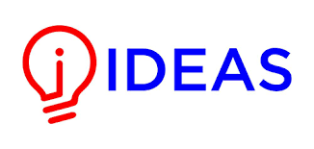Stress Detection and Prediction Using CNNs from Electrocardiogram Signals
Keywords:
Stress Detection, Stress Score, ECG, WESAD, ECG Signals, Stress Levels, CNNsAbstract
Stress prediction is a crucial aspect of mental health monitoring, with consequences for both psychological well- being and productivity. This work presents a unique way for stress prediction that uses binary and multiclass classification models. Through extensive experimentations with different durations and frequencies of Electrocardiogram Signal (ECG) signals, we identified a 5-second dataset sampled at 200Hz as the optimal configuration for our model. Moreover, we introduced an innovative feature i.e., the prediction of stress scores ranging from 0 to 100, providing nuanced insights into stress levels, where 0 represents no stress and 100 indicates high stress levels. The model obtains 95.04% accuracy, 95.27% precision, 94.95% F1 score, 86.69% sensitivity, and 99.44% specificity for the binary classification. With "Fun" added to the list of stress categories in addition to "Base" and "TSST," the model continues to perform well in the multiclass classification scenario, with accuracy of 88.10%, precision of 87.60%, F1 score of 87.35%, sensitivity of 95.97%, and specificity of 79.23%. These findings highlight how well this applied strategy predicts stress levels, providing important information for mental health and stress management strategies.
References
A. Mariotti, “The effects of chronic stress on health: New insights into the molecular mechanisms of brain-body communication,” Futur. Sci. OA, vol. 1, no. 3, Nov. 2015, doi: 10.4155/FSO.15.21/ASSET/IMAGES/LARGE/FIGURE2.JPEG.
S. L. Sauter, L. R. Murphy, and J. J. Hurrell, “Prevention of work-related psychological disorders: A national strategy proposed by the National Institute for Occupational Safety and Health (NIOSH).,” Work well-being An agenda 1990s., pp. 17–40, Oct. 2004, doi: 10.1037/10108-002.
A. H. Khandoker, H. F. Jelinek, and M. Palaniswami, “Heart rate variability and complexity in people with diabetes associated cardiac autonomic neuropathy,” Proc. 30th Annu. Int. Conf. IEEE Eng. Med. Biol. Soc. EMBS’08 - "Personalized Healthc. through Technol., pp. 4696–4699, 2008, doi: 10.1109/iembs.2008.4650261.
M. A. Serhani, H. T. El Kassabi, H. Ismail, and A. N. Navaz, “ECG Monitoring Systems: Review, Architecture, Processes, and Key Challenges,” Sensors 2020, Vol. 20, Page 1796, vol. 20, no. 6, p. 1796, Mar. 2020, doi: 10.3390/S20061796.
P. Zhang et al., “Real-Time Psychological Stress Detection According to ECG Using Deep Learning,” Appl. Sci. 2021, Vol. 11, Page 3838, vol. 11, no. 9, p. 3838, Apr. 2021, doi: 10.3390/APP11093838.
Z. Ahmad, S. Rabbani, M. R. Zafar, S. Ishaque, S. Krishnan, and N. Khan, “Multilevel Stress Assessment from ECG in a Virtual Reality Environment Using Multimodal Fusion,” IEEE Sens. J., vol. 23, no. 23, pp. 29559–29570, Dec. 2023, doi: 10.1109/JSEN.2023.3323290.
R. Zhou et al., “ECG-based biometric under different psychological stress states,” Comput. Methods Programs Biomed., vol. 202, p. 106005, Apr. 2021, doi: 10.1016/J.CMPB.2021.106005.
K. Tzevelekakis, Z. Stefanidi, and G. Margetis, “Real-Time Stress Level Feedback from Raw Ecg Signals for Personalised, Context-Aware Applications Using Lightweight Convolutional Neural Network Architectures,” Sensors 2021, Vol. 21, Page 7802, vol. 21, no. 23, p. 7802, Nov. 2021, doi: 10.3390/S21237802.
P. Karthikeyan, M. Murugappan, and S. Yaacob, “DETECTION OF HUMAN STRESS USING SHORT-TERM ECG AND HRV SIGNALS,” https://doi.org/10.1142/S0219519413500383, vol. 13, no. 2, Apr. 2013, doi: 10.1142/S0219519413500383.
A. Hemakom, D. Atiwiwat, and P. Israsena, “ECG and EEG based detection and multilevel classification of stress using machine learning for specified genders: A preliminary study,” PLoS One, vol. 18, no. 9, p. e0291070, Sep. 2023, doi: 10.1371/JOURNAL.PONE.0291070.
M. Kang, S. Shin, J. Jung, and Y. T. Kim, “Classification of Mental Stress Using CNN-LSTM Algorithms with Electrocardiogram Signals,” J. Healthc. Eng., vol. 2021, 2021, doi: 10.1155/2021/9951905.
P. Schmidt, A. Reiss, R. Duerichen, and K. Van Laerhoven, “Introducing WeSAD, a multimodal dataset for wearable stress and affect detection,” ICMI 2018 - Proc. 2018 Int. Conf. Multimodal Interact., pp. 400–408, Oct. 2018, doi: 10.1145/3242969.3242985.
M. Donati, M. Olivelli, R. Giovannini, and L. Fanucci, “ECG-Based Stress Detection and Productivity Factors Monitoring: The Real-Time Production Factory System,” Sensors 2023, Vol. 23, Page 5502, vol. 23, no. 12, p. 5502, Jun. 2023, doi: 10.3390/S23125502.
M. R. S. Zawad, C. S. A. Rony, M. Y. Haque, M. H. Al Banna, M. Mahmud, and M. S. Kaiser, “A Hybrid Approach for Stress Prediction from Heart Rate Variability,” Lect. Notes Networks Syst., vol. 519 LNNS, pp. 111–121, 2023, doi: 10.1007/978-981-19-5191-6_10.
S. Sriramprakash, V. D. Prasanna, and O. V. R. Murthy, “Stress Detection in Working People,” Procedia Comput. Sci., vol. 115, pp. 359–366, Jan. 2017, doi: 10.1016/J.PROCS.2017.09.090.
S. Koldijk, M. Sappelli, S. Verberne, M. A. Neerincx, and W. Kraaij, “The Swell knowledge work dataset for stress and user modeling research,” ICMI 2014 - Proc. 2014 Int. Conf. Multimodal Interact., pp. 291–298, Nov. 2014, doi: 10.1145/2663204.2663257.
A. Vulpe-Grigorasi and O. Grigore, “A Neural Network Approach for Anxiety Detection Based on ECG,” 2021 9th E-Health Bioeng. Conf. EHB 2021, 2021, doi: 10.1109/EHB52898.2021.9657544.
Y. Yu, X. Si, C. Hu, and J. Zhang, “A Review of Recurrent Neural Networks: LSTM Cells and Network Architectures,” Neural Comput., vol. 31, no. 7, pp. 1235–1270, Jul. 2019, doi: 10.1162/NECO_A_01199.
N. Faris Ali and M. Atef, “An efficient hybrid LSTM-ANN joint classification-regression model for PPG based blood pressure monitoring,” Biomed. Signal Process. Control, vol. 84, p. 104782, Jul. 2023, doi: 10.1016/J.BSPC.2023.104782.
B. Koonce, “ResNet 50,” Convolutional Neural Networks with Swift Tensorflow, pp. 63–72, 2021, doi: 10.1007/978-1-4842-6168-2_6.

Downloads
Published
How to Cite
Issue
Section
License
Copyright (c) 2024 50SEA

This work is licensed under a Creative Commons Attribution 4.0 International License.




















